Eastern Grey Kangaroo
- January 22, 2024
- 0 comment
The Eastern Grey Kangaroo, scientifically known as Macropus giganteus, stands as one of Australia’s most iconic marsupials. Its name derives from its habitat along the eastern coast of Australia and its striking grey fur. These kangaroos exhibit a remarkable blend of characteristics, with adults reaching heights of 1.5 to 2 meters when upright. They are known for their social behavior, often forming tight-knit groups called “mobs” or “troops,” with a dominant male leading the way.

Eastern Grey Kangaroos are herbivores, primarily grazing on grasses and shrubs, and their ability to adapt to various habitats, from woodlands to coastal areas, makes them a versatile species. Beyond their biology, these kangaroos hold cultural significance, as they are featured on the Australian coat of arms, symbolizing the country’s rich biodiversity. With their incredible leaping abilities and unique reproductive process, Eastern Grey Kangaroos continue to captivate both scientists and admirers of the natural world.
| Specification | Details |
|---|---|
| Scientific Name | Macropus giganteus |
| Common Name | Eastern Grey Kangaroo |
| Size (Adult) | 1.5 to 2 meters (4.9 to 6.6 feet) |
| Weight (Adult) | Males: 50 to 66 kilograms (110 to 145 lbs) |
| Females: 17 to 40 kilograms (37 to 88 lbs) | |
| Fur Color | Grey, ranging from pale to slate gray |
| Geographic Range | Eastern coast of Australia |
| Habitat | Grasslands, woodlands, coastal regions |
| Social Structure | Mobs led by a dominant male |
| Diet | Herbivorous, primarily grazing on grasses |
| Lifespan (Wild) | 6 to 8 years on average |
| Communication | Vocalizations, body language |
| Notable Adaptation | Remarkable leaping abilities |
| Reproductive Process | Female kangaroos have pouches for joeys |
| Conservation Status | Not endangered but faces habitat threats |
| Cultural Significance | Featured on the Australian coat of arms |
A Fascinating Australian Icon
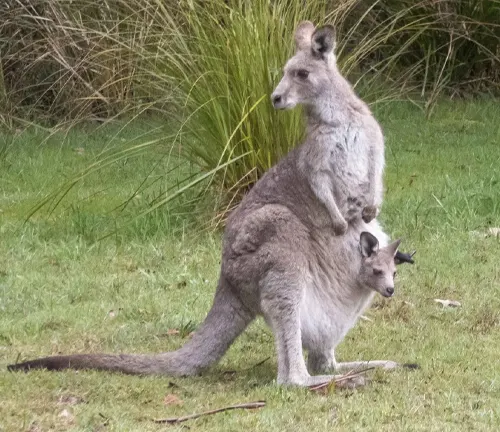
The Eastern Grey Kangaroo, often simply referred to as the Eastern Grey, is one of the most iconic and captivating marsupials that call Australia home. This unique species, known for its distinctive grey fur and remarkable leaping abilities, has long been a symbol of Australia’s rich biodiversity. In this article, we will explore the intriguing world of the Eastern Grey Kangaroo, delving into its physical characteristics, behavior, habitat, and its significant role in Australian culture and ecology.
Eastern Grey Kangaroo Overview
Appearance
The Eastern Grey Kangaroo boasts a striking appearance with its soft grey fur, which varies in shades from pale grey to a deeper slate color. It is the second-largest marsupial in Australia, surpassed only by the Red Kangaroo. Adult males typically weigh between 50 to 66 kilograms (110 to 145 pounds), while females are slightly smaller, ranging from 17 to 40 kilograms (37 to 88 pounds).
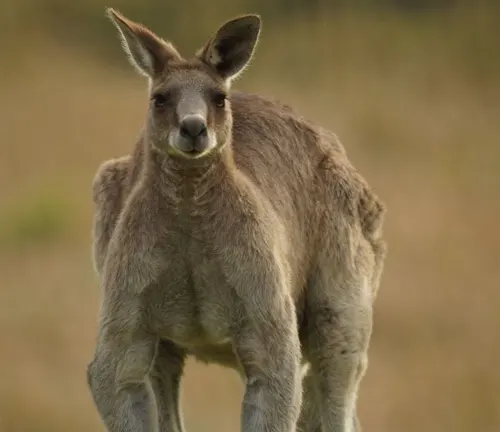
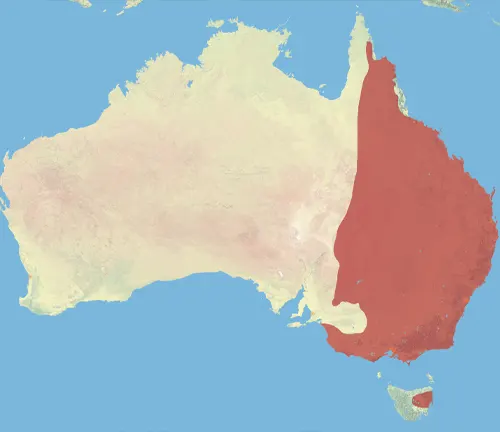
Distribution
This fascinating kangaroo species can be found along the eastern coast of Australia, from Queensland to Victoria, and into parts of South Australia. They are highly adaptable and can inhabit various environments, from grassy woodlands to coastal regions, making them a common sight for many Australians.
Social Structure
Eastern Grey Kangaroos are known for their complex social structures. They often gather in large groups known as mobs, led by a dominant male known as the “alpha male.” Within these mobs, individuals form close bonds and engage in cooperative behaviors, which is essential for their survival in the wild.
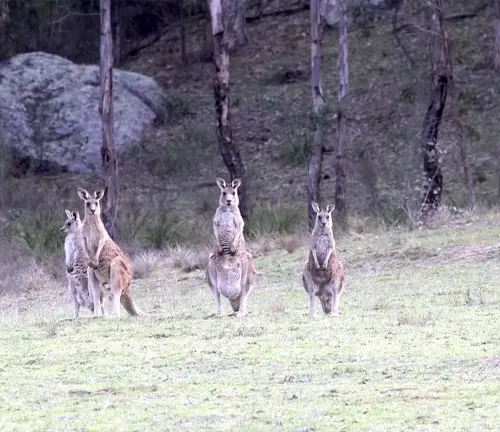
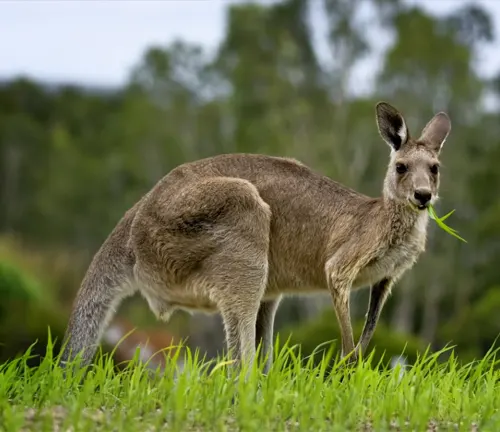
Feeding Habits
Eastern Grey Kangaroos are herbivores and primarily graze on grasses and shrubs. Their specialized digestive system allows them to efficiently extract nutrients from fibrous plant material, making them well-suited to their herbivorous diet.
Kangaroo’s Remarkable Adaptations
Leaping Abilities
One of the most remarkable features of the Eastern Grey Kangaroo is its incredible leaping abilities. They can cover vast distances in a single bound, reaching speeds of up to 50 kilometers per hour (31 miles per hour). Their powerful hind legs and long tail provide them with exceptional balance and agility, making them formidable jumpers.
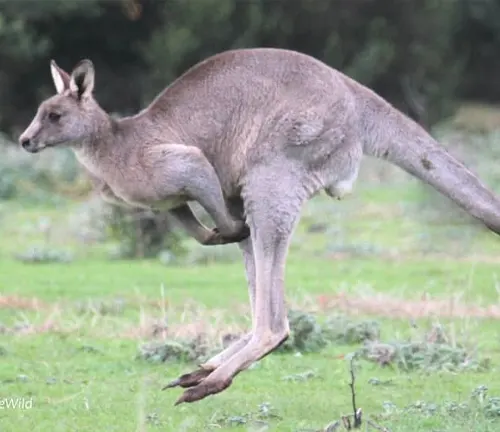

Reproduction
Like all kangaroos, Eastern Grey Kangaroos are marsupials. Female kangaroos have a pouch in which they carry and nurse their young, called joeys. The reproductive process of kangaroos is a testament to their remarkable adaptation to their environment.
Conservation Status
While Eastern Grey Kangaroos are not currently considered endangered, they face several threats, including habitat loss due to urbanization and land clearing. Conservation efforts are underway to ensure the protection of these iconic Australian marsupials and their natural habitats.
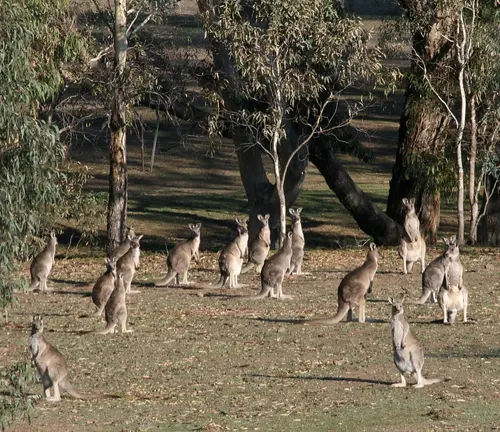
The Eastern Grey Kangaroo in Australian Culture
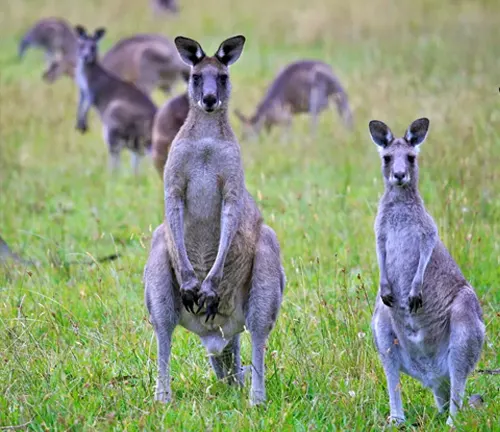
The Eastern Grey Kangaroo holds a special place in Australian culture and heritage. Its image can be found on the Australian coat of arms and is widely recognized as a symbol of the country. Additionally, these kangaroos frequently appear in indigenous Australian art, folklore, and storytelling, further emphasizing their cultural significance.
Different Species
Macropus giganteus tasmaniensis
As the name suggests, this subspecies is found in Tasmania. They are smaller in size compared to the mainland Eastern Grey Kangaroos and often have a darker fur color. Their adaptation to the Tasmanian environment has led to these distinct characteristics.
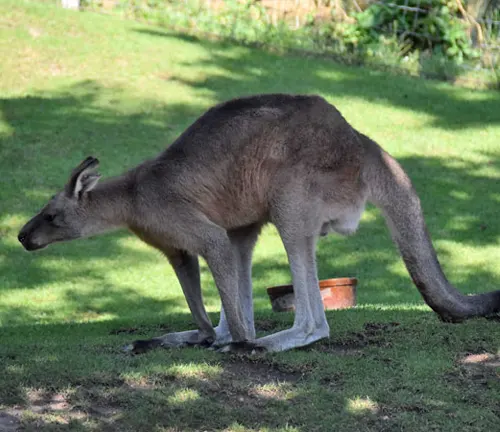
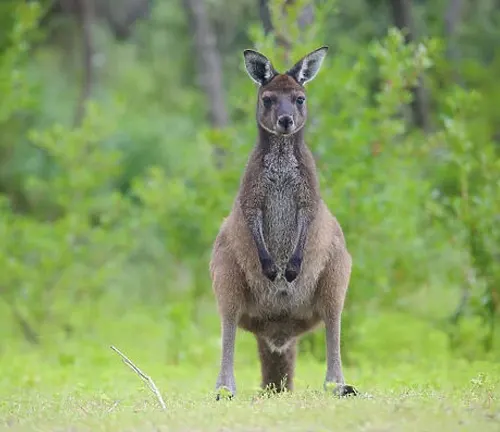
Macropus giganteus fuliginosus
This subspecies is found in the southeastern part of Australia, primarily in New South Wales and Victoria. They are slightly larger than the typical Eastern Grey Kangaroo and have a darker, more intense grey fur color.
Macropus giganteus erubescens
These Eastern Grey Kangaroos are found in the northeastern part of Australia, particularly in Queensland. They are similar in appearance to the main species but may exhibit regional variations in size and color.
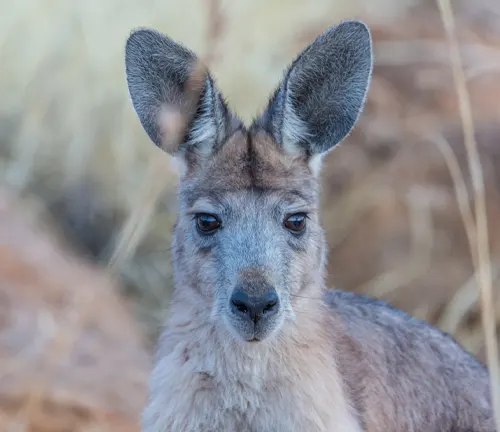
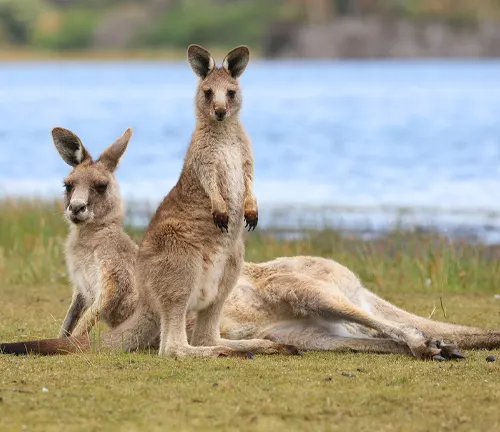
Macropus giganteus macleayi
This subspecies is found in the northern regions of Queensland, Australia. They are generally smaller and have adapted to the specific environmental conditions of their habitat.
Frequently Asked Question (FAQs)
- What is the Eastern Grey Kangaroo’s scientific name?
The Eastern Grey Kangaroo is scientifically known as Macropus giganteus. - How did the Eastern Grey Kangaroo get its name?
The name “Eastern Grey Kangaroo” reflects both its geographic range along the eastern coast of Australia and its distinctive grey fur. - What are the main differences between Eastern Grey Kangaroos and other kangaroo species?
Eastern Grey Kangaroos are distinguishable by their grey fur, smaller size compared to Red Kangaroos, and their habitat preferences. - What is the average size of an Eastern Grey Kangaroo?
Adult Eastern Grey Kangaroos can reach heights of 1.5 to 2 meters (4.9 to 6.6 feet) when standing upright. - Do Eastern Grey Kangaroos live in groups?
Yes, they often form social groups called “mobs” or “troops” that can consist of several individuals, including a dominant male. - What is the lifespan of an Eastern Grey Kangaroo in the wild?
In the wild, Eastern Grey Kangaroos typically live for about 6 to 8 years on average. - How do Eastern Grey Kangaroos communicate with each other?
They use vocalizations such as grunts and clicks and engage in body language to communicate within their groups. - What is the diet of Eastern Grey Kangaroos?
Eastern Grey Kangaroos are herbivores and primarily graze on grasses, shrubs, and other vegetation. - Do Eastern Grey Kangaroos have predators?
Young joeys are vulnerable to predation by eagles, dingoes, and foxes, but adult Eastern Grey Kangaroos have few natural predators due to their size and strength. - Are Eastern Grey Kangaroos considered endangered?
Eastern Grey Kangaroos are not currently considered endangered, but they face threats like habitat loss due to urbanization and land clearing. - How do Eastern Grey Kangaroos adapt to different environments?
They are highly adaptable and can thrive in various habitats, from grassy woodlands to coastal areas, thanks to their ability to graze on a variety of plants. - Are Eastern Grey Kangaroos kept in captivity for conservation purposes?
Yes, some wildlife conservation organizations and sanctuaries maintain Eastern Grey Kangaroos in captivity for breeding and educational purposes. - What role do Eastern Grey Kangaroos play in Australian culture?
They are a symbol of Australia and are featured on the country’s coat of arms, making them culturally significant. - Do Eastern Grey Kangaroos have any unique behaviors or habits?
They are known for their incredible leaping abilities, which allow them to cover vast distances in a single bound. - How do Eastern Grey Kangaroos reproduce?
Female kangaroos have a pouch where they carry and nurse their young, called joeys. The reproductive process is a key aspect of their unique biology.


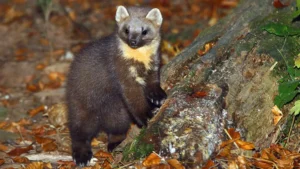


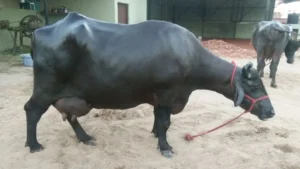
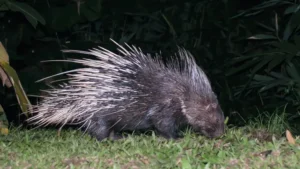


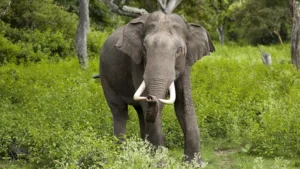
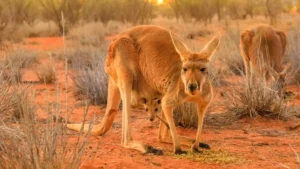
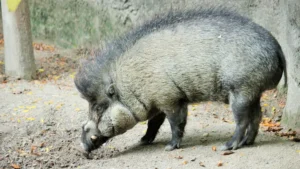

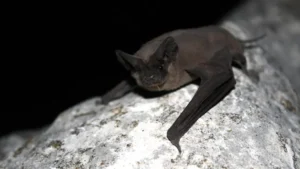
Leave your comment